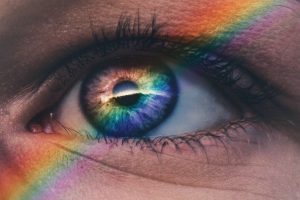Here is a thought experiment. If nobody, no organism saw the rainbow, did it exist, did it actually happen?
Some might say that if it was raining at the time and it was sunny, there was a high chance it did exist. Based on humidity level, sunshine, rain, etc. meteorologists could even work out the probability for you and calculate it in real time on a weather chart.
But if no organism actually saw it, you really have to make a leap of faith about whether it happened or not at a given time and place. This is the quandary. Quandary = a state of perplexity or uncertainty over what to do in a difficult situation.
When we are modelling our world, we use our experience, science, statistics, language and understanding. Collectively, these are observations, thoughts and concepts. They are only our approximations to reality, not actually reality.
It is difficult enough to get it right when we are modelling a specific “closed” system on planet Earth. Even if it follows an ideal statistics where everything behaves according to some bell shaped distribution or, if not, a non-parametric formulation of ever expanding variables derived from other variables to fit the data.
Then we have to deal with the physics that our very act of observing the constituent particles can alter their behaviour.
And, we never really have enough data to be 100% certain – in this case, that the rainbow happened at a certain place and time – although the statistics may indicate certain confidence levels about it at certain probability levels.
It is so difficult to be sure about the existence of this unobserved rainbow, a weather phenomenon. When we experience long tail or, so-called black swan events like Covid-19, we really are snookered!
When we try to factor in the complexities of human behaviour, as in economics, psychology, behaviour that often follows the man made amplifying effect of power laws, it becomes extremely complex to produce accurate models.
If we can’t be sure about the existence of an unobserved rainbow, what can we be sure about? We really do have to actually observe it to be “sure” and even then, how do we know that we are not imagining it or, being hoaxed in some way, maybe even by our own neurophysiology?
And then there is the debate about the external world being a creation of the mind. The science of ecology has discovered that the organism is not separate from it’s environment, but is an organism – environment, a unified field of interdependent, networked relationships and behaviour. And it goes on.
And after all of that, we still have to communicate our observation to others and convince them too!
Don’t you love uncertainty?

The limitations of our models – they are only our approximations to reality, not actually reality
